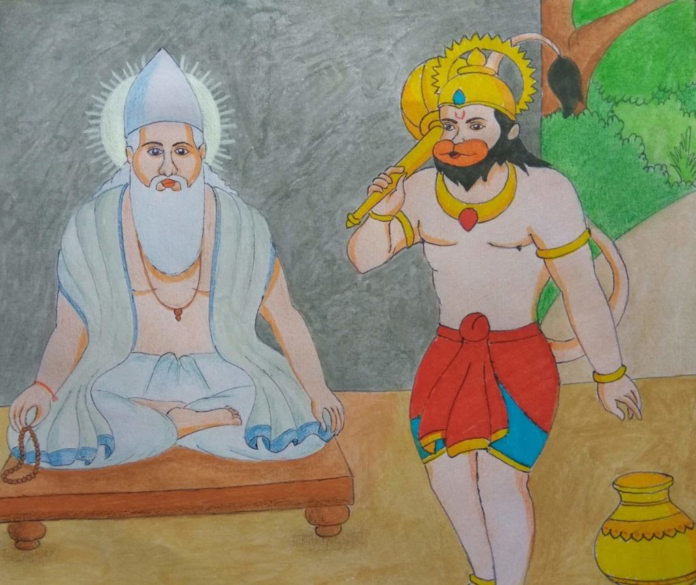
On the occasion of Hanuman Jayanti, the name of Munindra Rishi often surfaces, sparking curiosity among people about his connection to the festival. Social media buzz around his name and stories inspires many to learn more about him. In this article, I aim to share insights into the relationship between Hanuman Jayanti and Munindra Rishi, exploring their significance.
Who is Munindra Rishi?
Certain narratives, particularly those propagated by Jagatguru Rampal Ji and his followers, describe Munindra Rishi as a spiritual guide who played a pivotal role in Hanuman’s life. According to these stories, Munindra Rishi imparted profound spiritual wisdom to Hanuman, guiding him toward the path of true devotion and liberation. One tale recounts that when Hanuman was returning with Sita’s token (such as her bracelet), he encountered Munindra Rishi. The sage enlightened him about the existence of a supreme divine power beyond Lord Rama, emphasizing the importance of higher spiritual knowledge.
The Connection Between Munindra Rishi and Hanuman Jayanti
The link between Munindra Rishi and Hanuman Jayanti stems primarily from a specific sectarian narrative that highlights his role as Hanuman’s mentor. This story underscores Munindra Rishi’s contribution to Hanuman’s spiritual journey. However, this account is not widely accepted across all Hindu communities and remains largely confined to certain spiritual groups. The essence of Hanuman Jayanti typically revolves around celebrating Hanuman’s devotion, strength, and unwavering loyalty to Lord Rama. For those who believe in this particular narrative, remembering Munindra Rishi on this day symbolizes the pursuit of spiritual wisdom. They hold that Munindra Rishi’s guidance brought a transformative shift in Hanuman’s life, making his journey incomplete without it. Thus, on Hanuman Jayanti, devotees who follow this belief also honor Munindra Rishi as Hanuman’s guru alongside celebrating Hanuman’s birth.
Thier are more stories of highlight Munindra Rishi’s role as a catalyst for spiritual and practical outcomes in the Ramayana.
Munindra Rishi with Nala and Neel
Nala and Neel, two vanaras in Rama’s army, were once plagued by mental and physical ailments, deemed incurable by other sages. Seeking relief, they approached Munindra Rishi, who blessed them, curing their suffering. Grateful, they served at his ashram, but their weakened minds led to mistakes, like leaving items to float away in the river. Munindra granted them a boon: anything they placed in water—stones or utensils—would float. Later, when tasked with building the Ram Setu, Nala and Neel initially forgot their guru’s blessing, and the stones sank. Realizing their error, they invoked Munindra Rishi’s guidance, enabling them to construct the bridge successfully, as the stones floated with his divine aid.
Munindra Rishi with Ravana and Mandodari
In these narratives, Munindra Rishi was a spiritual mentor to Mandodari, Ravan’s wife, and Vibhishana, Ravan’s brother. After receiving initiation from Munindr, Mandodari embraced spiritual wisdom and urged Ravan to release Sita and reform his ways. However, Ravan, steeped in ego and devotion to mahadev alone, ignored her pleas. Munindr’s teachings inspired Mandodari to see beyond Ravan’s actions, but she couldn’t sway him. The sage’s influence also reached Vibhishana, who aligned with Ram, reflecting Munindra’s guidance toward righteousness, though Ravan remained unmoved by the sage’s indirect impact.
Munindra Rishi with shree Ram
A specific story describes Munindra Rishi meeting Ram when he was grieving after Sita’s abduction. The sage offered spiritual counsel, advising Ram to seek allies like Sugriva and Vibhishana to defeat Ravan. Munindra emphasized the importance of devotion to a supreme power beyond earthly struggles, uplifting Rama’s resolve. During the battle with Ravana, when Rama struggled to kill the demon king, Munindra is said to have appeared in a subtle form as the Supreme God, striking Ravana’s navel to end his life, revealing a divine intervention to aid Rama’s victory.

